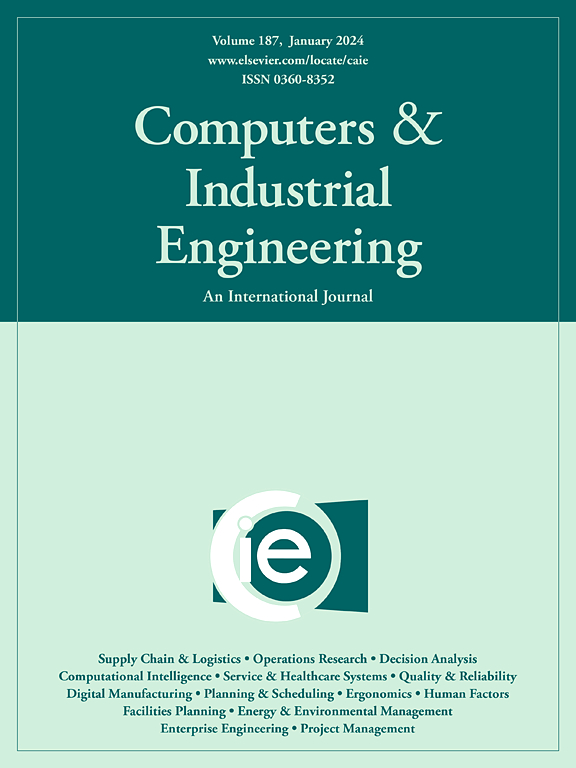Calendar design for assignment of ongoing appointments: Modeling, analysis and application
IF 6.7
1区 工程技术
Q1 COMPUTER SCIENCE, INTERDISCIPLINARY APPLICATIONS
引用次数: 0
Abstract
Appointment booking (AB) is a widely used technique for managing elective services like hospital surgical units, law courtrooms, and other services with high demand and limited resources. AB typically assigns services to specific time slots using an appointment calendar. However, devising an effective AB policy is challenging due to varying service types, durations, and demand variability. In this study, we present a preplanned appointment calendar (PAC), designed using a two-stage stochastic programming model to tackle service scheduling challenges based on demand and historical data. The design of the PAC is generated offline, prior to the arrival of any customers requesting an appointment, and aims to minimize the time from the initial appointment request to service completion, namely, the patient’s sojourn time. Despite the substantial public expenses incurred when appointments are scheduled far in the future, encompassing both indirect costs (e.g., those related to the development of chronic diseases) and direct costs (e.g., those arising from employee absence), the sojourn-time measure has not received sufficient attention in the existing literature. Our method minimizes patients’ sojourn time while considering operational constraints and quality of service (QoS) considerations, resulting in a practical and user-friendly appointment booking system. Our approach is adjustable and easy to apply in real time. We introduce the chained-PAC (CPAC) mechanism, in which multiple, smaller PACs are joined together, and demonstrate the applicability of this approach by implementing it in a cardiac surgical operating room at a major hospital in Toronto, Canada. Results show the PAC approach reduces wait times and improves resource utilization in the surgical unit compared to the existing AB system. Our approach benefits healthcare providers and patients and can extend to other similar service systems.
求助全文
约1分钟内获得全文
求助全文
来源期刊

Computers & Industrial Engineering
工程技术-工程:工业
CiteScore
12.70
自引率
12.70%
发文量
794
审稿时长
10.6 months
期刊介绍:
Computers & Industrial Engineering (CAIE) is dedicated to researchers, educators, and practitioners in industrial engineering and related fields. Pioneering the integration of computers in research, education, and practice, industrial engineering has evolved to make computers and electronic communication integral to its domain. CAIE publishes original contributions focusing on the development of novel computerized methodologies to address industrial engineering problems. It also highlights the applications of these methodologies to issues within the broader industrial engineering and associated communities. The journal actively encourages submissions that push the boundaries of fundamental theories and concepts in industrial engineering techniques.
 求助内容:
求助内容: 应助结果提醒方式:
应助结果提醒方式:


